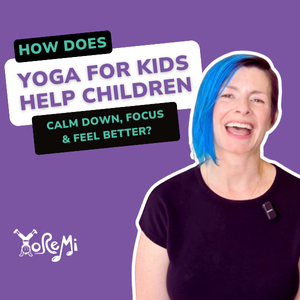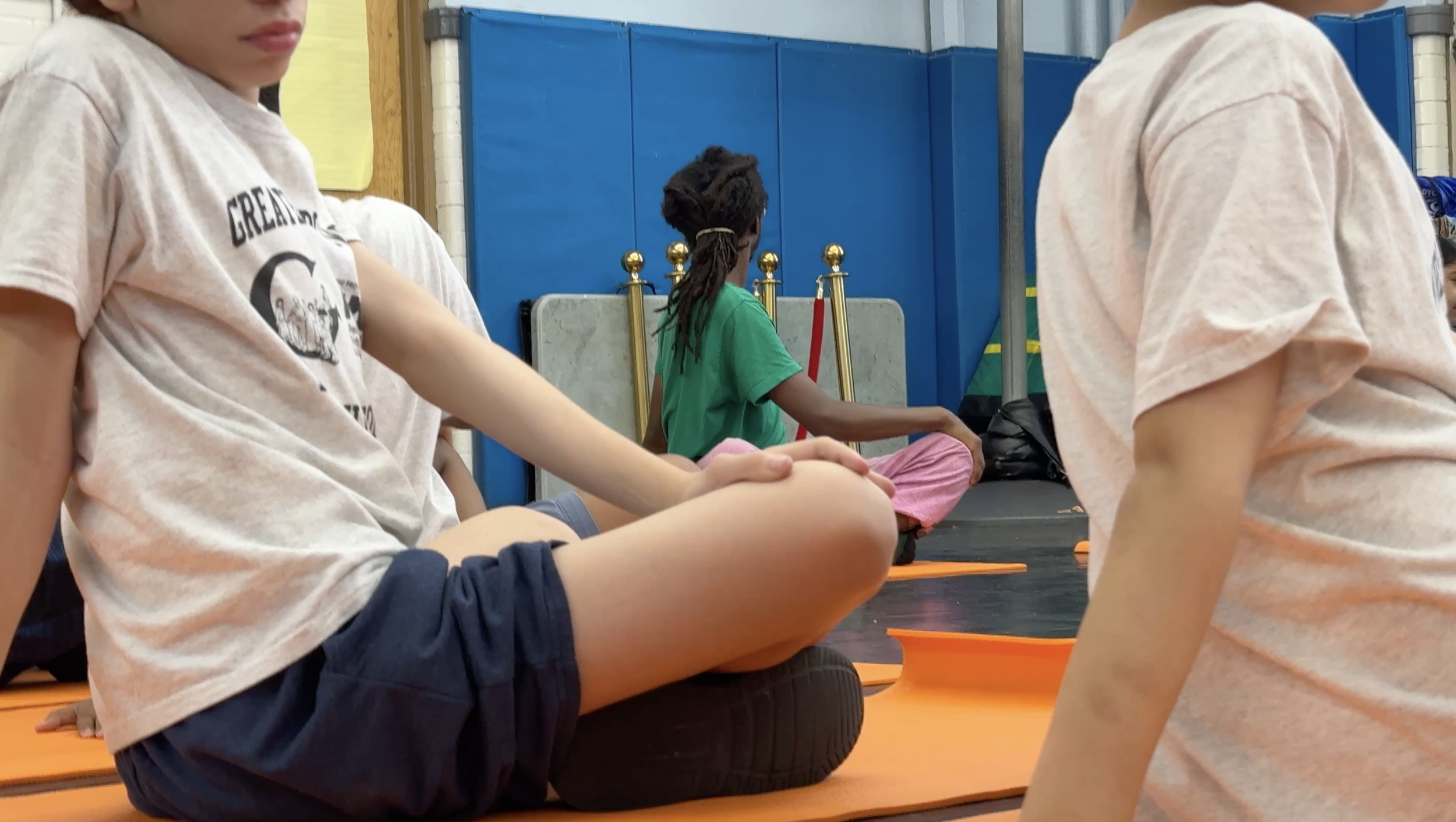6 Effective Eye Yoga Exercises for Healthy Eyes
“Helloooo…can you hear me?” I have said my son’s name three times and received no response. He is sitting five feet away so I know he’s listening. The problem is the iPad…you know, the bright, glowing, colorful screen of delight that used to be mine until it was commandeered for online school.
“E, I am talking you.” He stares, unblinking at the screen. I don’t get an answer until I walk over and pause the video. He finally looks up at me, clearly frustrated and upset that I have ruined his fun…here comes the meltdown and it’s only 10am!
For years, parents have been warned about the dangers of allowing children too much screen time. A recent study even suggests that children who spend more than two hours on digital screens are likely to develop ADHD.
I heeded the warnings, wholeheartedly. Screens were reserved for special occasions, weekend entertainment, and FaceTiming with grandparents. Now, all of that has changed.
Screen time has become an unavoidable necessity. Children are attending school, reading, learning and connecting with family and friends all through technology. At the same time, screen use has been associated with developmental issues, obesity, and poor sleep and eye development.
I know I’m not the only parent worried about what this is doing to my child’s health, specifically his eyes and vision.
While the American Academy of Ophthalmology does not have specific recommendations for amount of screen time for kids, they agree parents should be aware of the possible effects of screen use on children’s eyes.
Here are some screen-time side effects:
Myopia (Nearsightedness) - The number of people developing nearsightedness has doubled in the United States since 1971. A 2019 study shows that some of this increase has to do with near work activities including screen time, books and the amount of time spent indoors. The study also found that spending time outdoors, especially in early childhood, can slow the progression of nearsightedness.
Digital Eye Strain - This is a catch-all name for the symptoms we experience when we spend too much time been looking at a screen too long. These might include dry eyes, itchy eyes, blurry vision and headaches. While these are all temporary and have not been linked to permanent damage, increased screen time can impact our overall quality of life and physical comfort level.
Sleep Disruption - While the theorized correlation between blue light overexposure and macular degeneration has not been proven with research, screen use too close to bedtime has been shown to harm sleep quality and disrupt circadian rhythm. The National Sleep Foundation says children who spend a lot of time in front of a screen “tend to go to bed later, take longer to fall asleep, and sleep fewer hours than those with less exposure to these devices.”
So, what do we do to support children’s eyes in this new normal of increased technology and screen time? Let’s jump into some of our favorite exercises for eye health…try each one of them and let us know if eyes feel refreshed by the end of this article!
1. Rest the Eyes with Eye Palming
The first thing we do for over-exposed eyes is rest and relax them. Eye palming is yoga for eyesight that soothes the optic nerve, which is often irritated by extended screen use. This eye exercise invites us to tune out everything going on around us and turn inward, which helps our entire nervous system calm and relax.
Try this: Eye Palming
Rub your hands together briskly, until you feel a good amount of heat between your palms
Close your eyes and cup your palms over the eyes, eliminating light without pressing into the eye sockets or cheekbones.
Visualize blackness which is a relaxing color for the brain
Breathe deeply and slowly
You might see lights or colors - that is an indication of irritation in the optic nerve
Stay as long as feels comfortable, resting elbows on a table for support for longer practice
2. Release Eye Tension with Facial Massaging
After practicing eye palming, try adding in some face massage. We don’t actually massage the eyes, but relax the eyes by massaging all the muscles of the face. Usually if our eyes are strained, it’s likely that our brow, jaw and neck are tight and tense as well. Conversely, when we relax these areas, we also relax our eyes.
Try This: Face Massage
Rub your hands together briskly, until you feel a good amount of heat between your palms
Press the heels of your hands gently along your cheekbones, starting near the nose and working outward to the corners of the eyes
Bring the tips of your fingers to your forehead between your eyebrows and press with a gentle circling motion
Continue this outward along your eyebrow, down to the temples and around the ear to the spot behind your earlobe
Press and gently circle fingertips at the jaw corners, unclenching and relaxing the lower jaw away from the upper
Move along the jaw bone to the chin center and then sweep the hands down your neck to your collarbones a few times
Move hands along the collarbones to the opposite side of the neck and shoulders, pressing and squeezing gently to release all tension.
3. Blink Baby Blink
One of the biggest problems with screen time is the stare-effect. Online asks that require extended periods of focused concentration or shows and videos that are very engaging, can cause our blink rate to slow down without us even realizing it. Blinking helps our eyes stay moist, reduces tension and increases circulation.
Reduced blinking can cause quite a bit of strain on our eyes. Taking a moment to soften your gaze, look away from the screen and blink frequently can really help keep our eyes relaxed, refreshed and healthy.
Try This: Open Shut
Bring your hands close to our head.
Make fists with your hands and close your eyes
Tighten and squeeze all the muscles of your eyes, face and hands
Take a deep breath in and hold
Breathe out with a “ha” and open your eyes, mouth and hands as wide as they will go
Repeat as many times as feels comfortable
4. Eye Strengthening
Now that we have relaxed the eyes and released tension, we can start to exercise them. When we constantly look at things up close, we overuse a some of our eye muscles and weaken others. This exercise compensates for overdevelopment of the muscles we use to look at near objects.
Try This: Eye Clock
Picture the face of a clock in front of you
Without moving your head or neck, gently raise your eyeballs up to 12 o'clock
Hold them there for a second and then circle around clockwise to 1…2…3 and so on
Try to make the movements a smooth as possible
When you get back up to 12, bring your eyes back to center and close them
Repeat a few times in this direction and then switch to counter clockwise
Make it fun by asking children to move their eyes between two numbers on the clock - 9 and 3 for side to side, 12 and 6 for up and down, other combinations for diagonal
You can strengthen these same muscles with infants by moving an interesting toy or colorful scarf around in their field of vision. Their eyes will follow the object as you move it in circles, side to side and up and down.
READ NEXT: Effect of music on child development
5. Shift Your Focus
After you have mastered the basic eyeball movements in eye clock, it’s time to work on moving the gaze between points of focus. Habitually close or near focus can stiffen an organ called the ciliary body, which adjusts the lens of the eye.
Doing exercises that require us to change our gaze between near and far objects can release this stiffness and train our eyes to focus at different distances.
Try this: Thumb Gazing
Bring one thumb up in front of you pointing the tip upward with your arm long
Look at your thumb and bring it fully into focus
Look at something past your thumb, as far away as you can see, and bring it fully into focus
Switch between near and far a few times
Now look at your thumb again
Without moving your head, follow your thumb with your eyes as you move your hand to the side and back to center, upward and back to center and then downward and back to center
Close your eyes to rest and relax them and then do the same sequence on the other side
6. Move Your Body
Something as simple as going for a walk can lower pressure in our eyeballs by 20 percent so any aerobic exercise, including yoga is good for the eyes. Basic beginner yoga poses like Downward Dog or Forward Fold can increase circulation to the face, neck and shoulders while relaxation and restorative poses relax the eyes along with the body.
If you can move your body outside, that’s even better. A recent study shows that one additional hour of outdoor time per week decreases a child’s risk of developing myopia by about 14 percent. Scientists theorize the bright light levels outside play a key factor in this.
So take your yoga outside for maximum benefit and let’s be socially distant inchworms with Rachel!
As our screen use and time indoors increases, you can keep your eyes healthy by remembering the 20-20-20 rule:
For every 20 minutes spent looking at a screen, look at something 20 feet away for 20 seconds.
Add in one or more of these exercises and you will keep your eyes strong, relaxed and refreshed.
Save this article for later and don’t forget to download the Yo Re Mi app for exclusive mindfulness and musical yoga videos for kids.

















